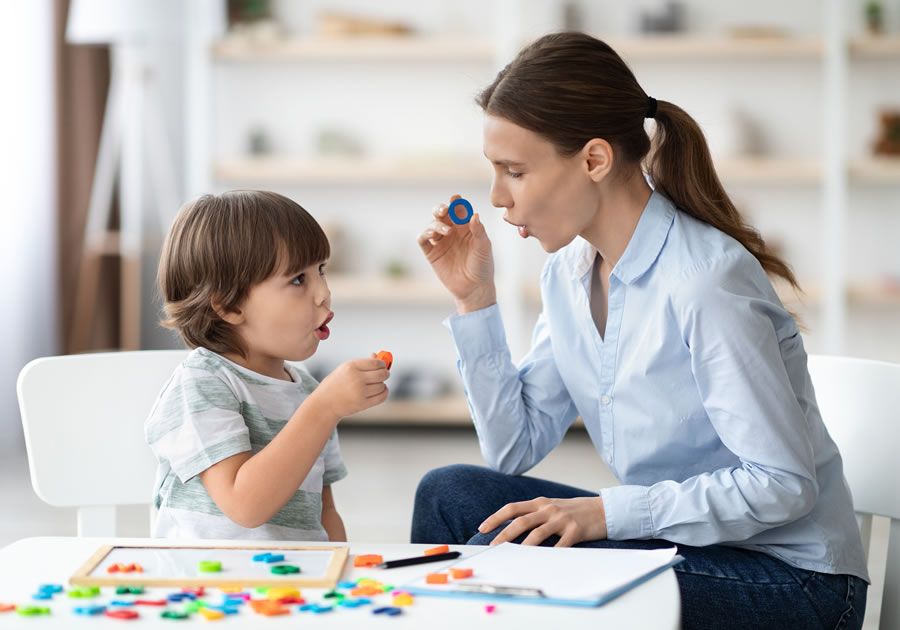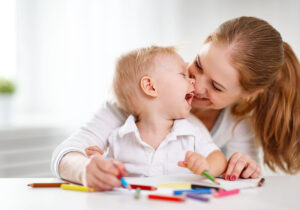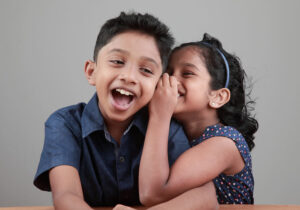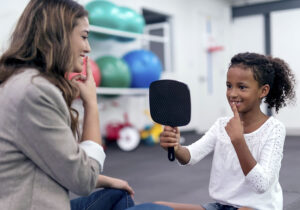It’s not always an easy business to know what is typical in your child’s speech development. Since most parents hear “wabbit” for rabbit or “feder” for feather from time to time, how do you know when these errors are an expected part of your child’s development?
Below are the ages by which most children begin correctly producing the various speech sounds. While the speech-language pathologists in your local school or private practice can evaluate your child, the chart below may help you decide when it’s time to reach out for help.
Take note that age of speech mastery varies by many factors. For example, girls and children with older siblings generally begin producing sounds earlier. Where the sound is positioned in a word is also influential (e.g. the “th” in “with” may emerge earlier than the same sound in “thing”).
The chart below represents an averaging of these factors.
| Average Age of Mastery | Speech Sound |
|---|---|
| 2.5 years | m as in “me” p as in “happy” |
| 3 years | b as in “be” d as in “daddy” n as in “no” f as in “off” h as in “he” g as in “go” ng as in “sing” |
| 3.5 years | k as in “kick” w as in “we” z as in “is” y as in “yes” |
| 4 years | t as in “too” v as in “voice” |
| 4.5 years | s as in “sit” sh as in “shoe” ch as in “chat” j as in “juice” |
| 5 years | l as in “line” |
| 6 years | r as in “red” |
| 7 years | th as in “the” |
| 8 years | th as in “with” |
References
Goldman, R. Fristoe, M. (2016) Record Form. Goldman-Fristoe Test of Articulation, 3rd Edition. Bloomington, MN: NCS Pearson, Inc.





